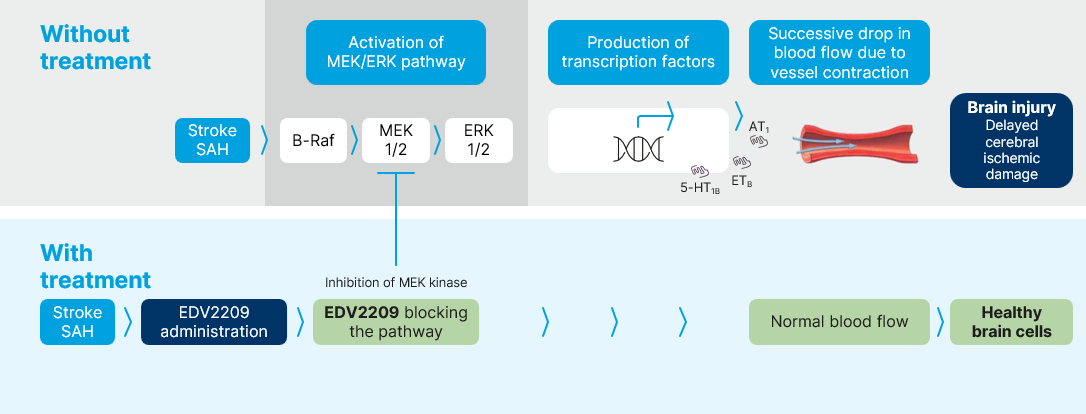The new approach takes the sequence of events that occur when a patient suddenly is hit by stroke, as described in the figure below, as its starting point. What happens first when a person gets a blood clot in a brain artery, or in the event of bleeding hemorrhage (aneurysm rupture), is a critical (product of flow and pressure in the vessel) drop in blood flow and a dramatic increase in intracranial pressure. The so-called shear stress goes down locally and activates a group of proteins called integrins in the extracellular matrix of the brain artery walls. Once this happens, the integrins signal to the focal adhesion kinase, which in turn signals the “ras-raf-MEK-ERK” pathway which then turns on transcription and further on translation and production of contractile receptors and inflammation proteins. It takes several hours before this sequence of events is completed.
This mechanism is designed by nature to protect the brain and limit tissue damage but unfortunately produces an overshoot which causes severe damage due to the fact that the brain circulation is based on end arteries. The deep understanding of the complex mechanisms evoked by stroke, followed by extensive testing of inhibitors at different stages of the cascade, led to a breakthrough discovery.
Inhibition of the MEK kinase provides the largest time-window for therapy and was identified as a successful therapeutic target in SAH in order to maintain the blood vessels in the brain open and thereby reduce brain damage.
